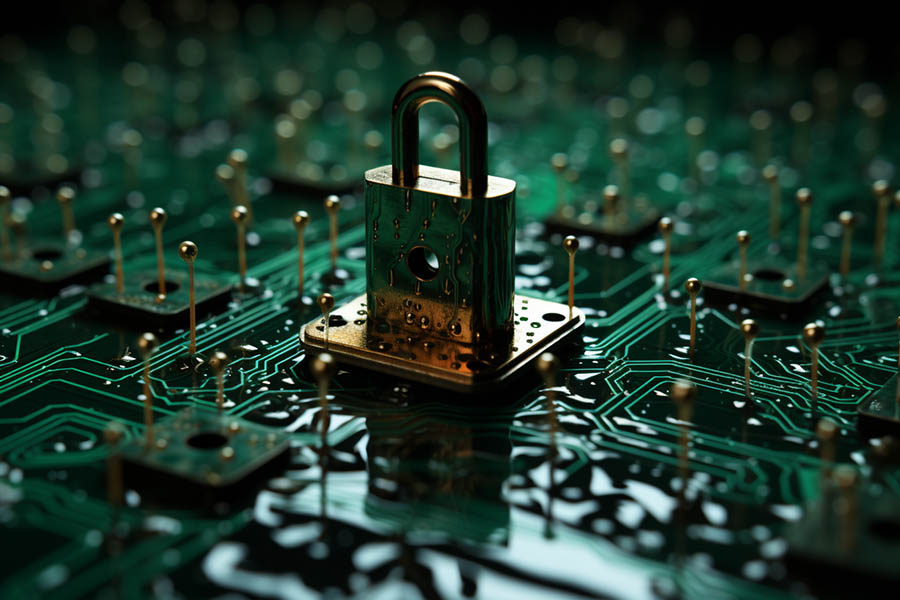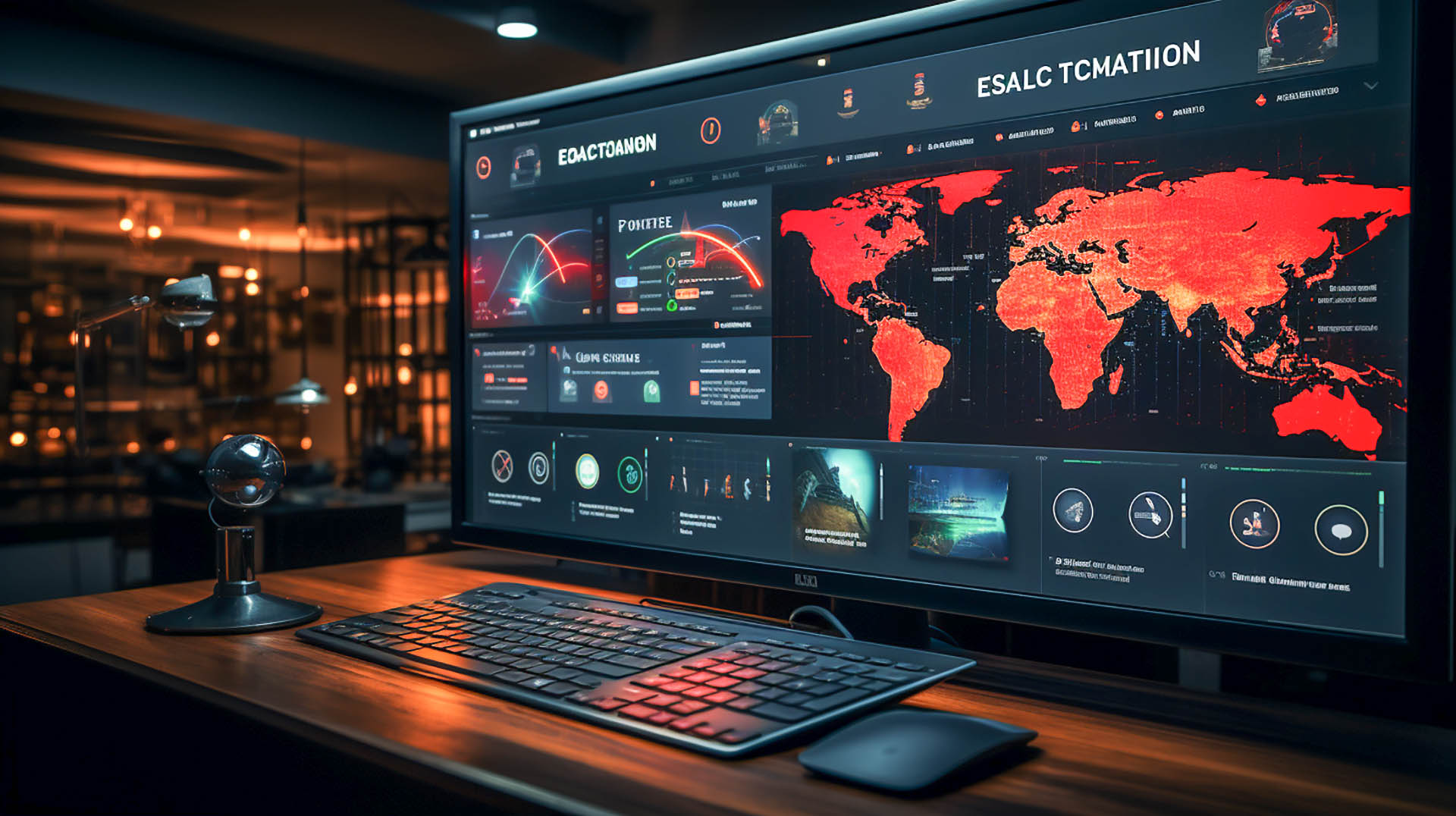Vehicle Identification Technology: Enhancing Law Enforcement with VMMR and ALPR
In the ever-evolving landscape of smart city and safe city projects, the integration of advanced technologies has become pivotal for enhancing urban safety and efficiency. Among these innovations, Vehicle Make Model Recognition (VMMR) and Automatic License Plate Recognition (ALPR) stand out as powerful tools for law enforcement agencies. When combined, they form a comprehensive vehicle identification technology that significantly improves the precision and effectiveness of tracking and identifying vehicles involved in various incidents. This article explores the synergistic benefits of VMMR and ALPR, and how they contribute to smarter, safer cities.
Understanding VMMR and ALPR
Vehicle Make Model Recognition (VMMR) is a sophisticated technology that identifies the make, model, and color of a vehicle through image analysis. By using machine learning algorithms and extensive databases, VMMR can accurately classify vehicles based on visual characteristics. This technology is invaluable for law enforcement as it provides detailed information about a vehicle beyond just the license plate, aiding in the identification process when plates are obscured or missing.
Automatic License Plate Recognition (ALPR), on the other hand, is a well-established technology that captures and reads license plate numbers using optical character recognition. ALPR systems can quickly scan and record plates from video footage or still images, making it an essential tool for monitoring and tracking vehicles in real-time. ALPR is widely used for traffic management, toll collection, and surveillance, offering immediate data on vehicle movements and ownership.

The Power of Combined Technologies
When VMMR and ALPR are integrated, they create a robust vehicle identification technology that enhances the capabilities of law enforcement agencies. This combined approach provides multiple layers of verification, significantly increasing the accuracy and reliability of vehicle identification. Here are several ways in which this technology proves beneficial:
- Improved Vehicle Tracking
The combination of VMMR and ALPR allows for more precise tracking of vehicles. In scenarios where a vehicle's license plate might be altered or removed, VMMR can still identify the vehicle based on its make, model, and color. Conversely, when a vehicle's appearance is modified, ALPR can verify its identity through the license plate. - Enhanced Crime Investigation
Law enforcement agencies can leverage this technology to solve crimes more efficiently. For instance, in cases of hit-and-runs, robberies, or kidnappings, identifying the vehicle involved becomes crucial. The dual identification approach ensures that even if one method fails, the other can provide critical information, thereby narrowing down suspects and speeding up investigations. - Traffic Violation Enforcement
VMMR and ALPR together enable better enforcement of traffic regulations. Authorities can monitor and identify vehicles that violate traffic laws, such as running red lights or speeding. This not only helps in issuing fines more accurately but also deters potential offenders due to the increased likelihood of detection. - Stolen Vehicle Recovery
Recovering stolen vehicles becomes more manageable with this integrated technology. Even if thieves attempt to change the license plates, VMMR can still identify the stolen vehicle based on its make and model. This dual-check system ensures that stolen vehicles are more likely to be spotted and recovered quickly.
Benefits for Smart City and Safe City Projects
The application of VMMR and ALPR within smart city and safe city projects brings numerous advantages. These projects aim to enhance urban living by leveraging technology to improve safety, efficiency, and quality of life. Here’s how vehicle identification technology plays a crucial role:
- Increased Public Safety
By enabling faster and more accurate identification of vehicles involved in criminal activities, this technology enhances public safety. Law enforcement agencies can respond more swiftly to incidents, reducing crime rates and improving overall security. - Efficient Traffic Management
Smart cities rely on efficient traffic management systems to reduce congestion and improve transportation flow. VMMR and ALPR provide real-time data on vehicle movements, helping city planners optimize traffic signals, manage road usage, and minimize delays. - Data-Driven Decision Making
The data collected from vehicle identification technology can be analyzed to understand traffic patterns, identify high-risk areas, and deploy resources more effectively. This data-driven approach ensures that decisions are based on accurate and comprehensive information. - Enhanced Emergency Response
In emergency situations, such as natural disasters or terrorist attacks, having a reliable vehicle identification system can be critical. Authorities can quickly identify and track vehicles involved, coordinate evacuations, and ensure that emergency services reach the affected areas promptly.
Challenges and Future Directions
While the integration of VMMR and ALPR offers significant benefits, it also presents challenges that need to be addressed. Privacy concerns are paramount, as the extensive surveillance capabilities of these technologies may lead to unauthorized tracking and data breaches. Implementing robust data protection measures and ensuring compliance with privacy regulations is essential to mitigate these risks.
Moreover, the accuracy of VMMR can be affected by various factors, such as poor lighting conditions, adverse weather, and modifications to the vehicle’s appearance. Continuous advancements in machine learning algorithms and image processing techniques are necessary to improve the reliability of this technology.
Looking ahead, the future of vehicle identification technology lies in further integration with other smart city systems. Combining VMMR and ALPR with IoT devices, artificial intelligence, and blockchain technology can create a more interconnected and secure urban environment. This holistic approach will enable cities to harness the full potential of these technologies, providing enhanced safety and improved quality of life for residents.
A significant advancement in Law Enforcement capabilities
Vehicle identification technology, powered by the integration of Vehicle Make Model Recognition (VMMR) and Automatic License Plate Recognition (ALPR), represents a significant advancement in law enforcement capabilities. This combined approach enhances the precision and reliability of vehicle identification, aiding in crime investigation, traffic management, and public safety. As smart city and safe city projects continue to evolve, the deployment of VMMR and ALPR will play a crucial role in creating safer and more efficient urban environments. By addressing challenges and leveraging future technological advancements, we can unlock the full potential of vehicle identification technology, paving the way for smarter and safer cities.
5 use cases for a Digital Evidence Management System
Digital Evidence Management Systems (DEMS) have been gaining in popularity over the past years, because digital evidence is more and more present in many cases and has to be securely preserved, keeping its legal validity and the Chain of Custody intact, so it can be used in court, if necessary. But that is not all a Good DEMS should be capable of…
What is a DEMS?
In short, it is a secure management system for digital files, that has complete traceability, keeps the Chain of Custody and allows secure and centralized storage of any digital file to be analyzed later. This analysis usually is done by AI analyzers, able to find faces, voices or objects in videos or pictures. Or to transcribe audio to text (S2T) so the transcription can be easily search.
Besides this, a DEMS should provide secure accessibility from anywhere and be in compliance with local privacy and evidence requirements such a GDPR, CCPA, HIPAA and others. Not only must the system store all files in an encrypted way, but it has to be able to read and interpret any file format, and allow the users to watch or hear them directly. Sharing features are also important, as the evidence, in many cases, has to cross from police to the judicial system, or from the private sector to the police. And all of this, keeping always the integrity of the files intact under any circumstance.
Let’s see some of the most frequent use cases for a Digital Evidence Management System, although there are others:


1. Law Enforcement
One of the main use cases for a Digital Evidence Management System is obviously Law Enforcement. Nowadays much of the evidence in any regular case may have a digital origin, what makes a means of managing all of the files absolutely necessary. But the managing part, although important, is not the most important.
Evidence integrity and the Chain of Custody are at the forefront of the features that a good DEMS system must have. In the age of digital content, it is relatively easy to change things in a document, audio file o video recording. Usually that has no further impact, but when these files have to serve as evidence in a criminal case the judge must be absolutely sure that the file is in the exact same state that when it was collected in the first place by the police.
Furthermore, the DEMS system must have a powerful search feature, able to link different files between them when an investigative lead shows up. The ability to filter different types of files and to reunite them in packages, all separated by cases is also necessary. All of this empowers the officers to deal with all the digital evidence in a swift manner, without having to sift through hundreds of files for hours. Once evidence has been found, it is also necessary to be able to share that information with other departments or officers, as well as the judicial system, for when the case goes to trial.
2. Criminal Justice
Highly related to the previous use case is the Criminal Justice system. Prosecutors, defenders, attorneys and judges must all have seamless access to all the evidence pertaining to a specific case. In other words, evidence gathered by police has to be shared with the judicial system, in order to be presented in trial. And here, again, the Chain of Custody is of paramount importance, to ensure that the presented evidence has not been altered in any form along the way.
As the age of physical storage devices has passed, secure and encrypted transmissions must be guaranteed and, ideally, all the evidence should be stored in one centralized, secured, place, to be accessed by all the stakeholders. And in some specific cases part of the evidence must be redacted, in order to protect witnesses or the like. Hence the Digital Evidence Management System must provide the means to not only redact documents with the typical black bars, but also audio files (with beeps, for examples) or video files (with blurring or black boxes in the appropriate places). Especially in the case of video this is a challenge, as the part to be redacted may move across the frame.


3. Insurance Sector
Not only the public sector may use a DEMS. Insurance companies often deal with complicated claims and the evidence presented may well be in the form of an audio recording or a cellphone video or picture. In all of these cases it is necessary to store all of the information related to a specific claim in a centralized place, to be accessed by all of the employees or insurance expert to assess the claim.
One of the changes in the insurance sector has been that the claim experts not always have to travel to the place where the claim has originated, but they can assess the damage through a video call directly from the office, and store that recording in the DEMS for further reference. This not only streamlines and accelerates the claim process, but increases productivity and lowers costs for the insurance company.
4. Forensic Labs
In all of the previous three cases it may happen that some of the digital evidence comes from damaged devices (security cameras damaged by fire or flooding in the case of insurance claims, or intentionally damaged to get rid of incriminating evidence in the case of police cases). Whatever the cause of the damage, sometimes those devices hold really important information and it must be recovered. In those cases, a Digital Forensics Lab steps in.
For this particular use case the DEMS is not only the storage and management system for the recovered files, but also has to be able to link the restored or recovered segments to the original file, in the right places, so the expert, agent or officer can see both versions side by side and evaluate which one provides more information. All of this, obviously can be attached to a case file to serve as evidence in court.


5. Retail Sector
Another private use for a DEMS is the retail sector. Big shopping malls or nation-wide store chains may want to have all of their security cameras tied into a VMS (Video Management System) and save all the footage. However, VMS, by design, are not appropriate to store files securely and avoid possible tampering with them.
Hence, when a case comes up that involves some security issue, the files have to be moved to a DEMS, so internal security (and, possibly, Law Enforcement and a judge) can watch the evidence and be assured that it is the original file, that the Chain of Custody is intact and that no changes have been applied to the evidence. All of this can shorten legal proceedigs, and result in better security and more favorably solved cases for the Store or mall.
Conclusion
We have seen that the Digital Evidence Management Systems, although primarily used by Law Enforcement, Intelligence Agencies and the Judicial branch, also have applications in private sectors, like insurance and retail. Whenever you have a lot of videos that have to be securely managed and analyzed, and it is of importance to keep the Chain of Custody intact, a Digital Evidence Management System like our own Intelion is the solution.
What is a Digital Evidence Management System?
In today’s police work, digital evidence has a more prominent role than ever before. Everything from emails and text messages, to surveillance footage and social media posts, plays a crucial role in law enforcement, legal proceedings, and even corporate investigations or personal matters. But the amount of digital evidence that can be part of a case is vastly overwhelming and requires a system that helps managing it: a DEMS.
What is digital evidence?
The term “digital evidence” refers to any information or data that can be used in legal proceedings, investigations, or audits. For the most part, we interact with it in our daily lives, but it can take various forms beyond those usual data types, including:
- Text data: Emails, text messages, chat logs, and documents of different types.
- Multimedia: Photos, videos, audio recordings, and animations.
- Online Activities: Social media posts, website history, and online communications.
- Device and System Data: This is more specific and usually is not used in everyday life, but is really relevant for Law Enforcement. The category includes information from computers, smartphones, IoT devices, and surveillance cameras.
The importance of digital evidence has grown exponentially as technology has advanced, and it now serves as a critical resource for solving crimes, resolving disputes, and ensuring compliance. But this brings a couple of challenges with it.


The current challenges
Managing digital evidence can be a complex and daunting task, mostly because of the sheer volume and variety of data sources that we come in contact with, especially in today’s connected world, where everyone has (at least) one smartphone. So any modern investigation has to face different issues when dealing with digital evidence:
- Data Volume: Any police or intelligence investigation can easily gather hundreds or thousands of files of different types. The rapid growth of digital data requires efficient storage and retrieval mechanisms.
- Data Integrity: Particularly in police work ensuring the authenticity and integrity of digital evidence is crucial to its admissibility in court.
- Security & Privacy: Protecting sensitive digital evidence from tampering and unauthorized access is paramount. As is having a system in place that allows a very granular access to the information, based on certain rules, that can be defined for every particular investigation. Also storage security is a very important issue for this point. Encrypted and secure storage is simply a must.
- Compatibility: Different devices, file formats, and software can complicate evidence collection and analysis. Hence a DEMS (Digital Evidence Management System) needs to allow the ingestion of almost any file type, so it can be used and analyzed in the context of the investigation.
- Admissibility: Digital evidence can be ruled inadmissible by courts because it was obtained without authorization. So, in most jurisdictions, a warrant is required to seize and investigate digital devices. Either live data (from working devices) or forensic data (recovered from destroyed or partially damaged / deleted devices.
- Legal Compliance: For any DEMS it is imperative to comply with digital evidence management standards and best practices, in order to meet legal and regulatory requirements.
- Chain of Custody: Maintaining a clear record of who had access to the evidence at each stage is essential for the legal admissibility. Any DEMS must provide a clear and extensive logging of any and all actions related to all the files that represent evidence in a case.
Why is a DEMS (Digital Evidence Management System) necessary?
To cope with all the previous challenges, a DEMS needs to be able collect, store, preserve, analyze, and present digital evidence while maintaining its integrity and authenticity. The last two are especially important, because the prove the data has not been altered in any way, and it comes from a known and reliable source. This preservation not only covers the actual data, but also the metadata extracted from it during the analysis phase.
Due to the amount of files that usually have to be analyzed, artificial intelligence analyzers are used normally to comb through all the data in order to find the evidence we need in the available amount of time. No human could ever check 600 hours of video by hand looking for evidence. But a machine can do it in a couple of minutes or, at the most, hours. For example, our own Intelion DEMS.
All of this defines a series of features that every DEMS should have to integrate seamlessly in the workflow of police investigations. The first step is always the gathering and storage of information from different relevant sources. In this step it is very important to use sound methods to prevent contamination or alteration of the digital evidence. After this, all the information has to be stored securely, with a really strict access, for only those people directly involved with the case at hand.
The step that all investigators usually appreciate most, is the analysis step. In this phase all the evidence is analyzed either by hand or, more frequently, with AI analyzers, that can work in an unattended manner, on multiple files at a time. This step is one of the most important ones, as it serves to extract meaningful insights or establish connections between pieces of information. Digital forensics tools and techniques can also be employed in this phase, when necessary.
The last step is the presentation phase, where all the findings are compiled into a summary, in order to present the evidence in a clear and understandable manner. This may involve creating reports, charts, or presentations for judges, juries or other Law Enforcement agencies or branches.
During all this process, maintaining the Chain of Custody (CoC) is very important, in order to keep the validity of the found evidence. This entails maintaining a secure and documented record to demonstrate that the evidence has not been tampered with or mishandled during its lifecycle. All accesses to the information must be registered, any change or modification logged and the files have to be digitally signed after their upload, to disallow any later modification. Only this way the evidence will hold in court.

Conclusion
In an era where digital information is omnipresent, digital evidence management is paramount to maintaining accountability, resolving disputes, and upholding the integrity of legal and investigative processes. Organizations and individuals must invest in the right tools, technologies, and practices to effectively manage digital evidence, ensuring its admissibility and reliability in court and other contexts. As technology continues to evolve, so too must our methods for managing the digital evidence that plays an increasingly central role in our lives.
ISID attends the Ministry of Foreign Affairs' seminar on Security and Defense in Toledo
The spanish Ministry of Foreign Affairs, European Union and Cooperation has held a seminar in Toledo to discuss the future of the security in the European area and outline actions and initiatives until 2030, within the “Strategic Compass” initiative, which is a guide of the European Union to improve the security and defense of the Eurozone.
Implementing the strategic compass: challenges and opportunities
Madrid, August 30, 2023. ISID, a technology company focused on AI solutions and platforms for advanced video and audio storage and analysis, attended the seminar “Implementing the strategic compass: challenges and opportunities” that was held on August 30 in Toledo, organized by the spanish Ministry of Foreign Affairs, European Union and Cooperation.
The High Representative for EU Foreign Policy, Josep Borrell, the Commissioner for the Internal Market, Thierry Breton, the Minister of Foreign Affairs of Portugal, João Gomes Cravinho, as well as the Minister of Defense of the Netherlands, Kajsa Ollongren all attended, as well as various representatives of the European defense industry.
The central topic of the seminar has been the “Strategic Compass”, the first white paper of the European Union for security and defense, which was approved by the European Council in March 2022. This initiative represents an action plan to strengthen security and defense policy of the European Union until 2030. The current instability in the European periphery (the war in Ukraine) has provoked this response from the Union, setting guidelines to improve the security of the eurozone over the coming years.
The event, attended by our own Alfredo Ramírez, BD & Sales Director of ISID, was inaugurated by José Manuel Albares, acting Minister of Foreign Affairs, European Union and Cooperation and Margarita Robles acting Minister of Defense, at the Toledo Congress Palace.

Source: Ministerio de Defensa
Intelion, an AI platform for security
ISID specializes in AI tools for video and audio analysis and, in law enforcement and security area, has Intelion, the video analysis platform for law enforcement, which improves the effectiveness of police investigations and increases public safety.
Thanks to its artificial intelligence modules and its ability to integrate into existing video systems, Intelion makes it possible to replace human surveillance with automatic surveillance, 24/7. The system is able to analyze tens or hundreds of cameras by connecting to one or more VMS (Video Management System) that centralizes the cameras, and to find specific elements such as faces, license plates or objects, in an unattended fashion.
Intelion is used in law enforcement and also has a vertical specifically oriented to the defense field, with special functions for detecting military vehicles from drones and the like. This makes it possible to face operations with more information, in order to make better decisions. On the other hand, Intelion’s unattended surveillance makes it possible to monitor specific areas such as metropolitan zones or border regions.
Conclusion
AI video analytics systems such as Intelion enable automatic surveillance of multiple areas and its alert system keeps all the relevant personnel informed instantly via any public or proprietary messaging system to reduce reaction times to a minimum. In any new security or defense initiave this is a desirable functionality as it allows to shift the lion share of the analysis work to the AI and reduce or eliminate human error.
Improve your Smart City with Safe City initiatives
Cities are growing at an astonishing pace worldwide. More than half of the Earth’s population lives in cities nowadays. And that represents certain challenges to those in the regional governments, to keep the urban spaces and services in good condition to provide an adequate environment to all that live in the city. For years now the solution has come from technology, in the form of Smart Cities.
What is a Smart city?
In general, a Smart City is one that uses Information and Communications Technologies (ICT) and IoT (Internet of Things) sensors to help run the different operations needed in the city. However, there is no strict definition, as the technology itself is evolving and different uses of it are made in different cities, and so every Smart City can be slightly different from the next one. However, there are many common areas that benefit from the use of technology, despite the different specific uses of those technologies in each case:
- Energy Grid. Supplying electricity to all the inhabitants and businesses of a city is no mean feat. That is why most Smart Cities use Smart Grid technology, combining a series of energy sources, with a trend in incrementing the sustainable ones.
- Environment and pollution. The more people that live in a city, the more important air quality becomes. That’s why all of the Smart Cities have sensors over all the metropolitan area to measure CO2, ozone, the water quality and other parameters.
- Waste disposal. Having several millions of people concentrated in the same area generates a lot of waste, the city has to get rid of. To minimize the logistics involved, there are initiatives with sensors in garbage containers, to optimize the route of the trucks, picking up only full containers, for example.
- Public transport. Having a good public transport system is vital to reduce overall private traffic and helps driving costs down with optimized routes and timetables, all based on real-time geolocation of the vehicles, for statistical analysis.
- Traffic. Closely related to the previous item, traffic is one of the main priorities of any city government. Cameras that control traffic density can help to change the timing on traffic lights to improve flow. Or to create fast routes for emergency vehicles.
- Health. Another major point is the management of all the sanitary and health care infrastructure.
- Civil protection. This includes disaster alerts & responses for floods, storms, fires, etc. and the management of firefighting forces and the like.
- Safe City. This is also one of the critical areas and is usually more related to Law Enforcement, but can also include some of the previous areas, like civil protection, traffic management and environment. This includes urban video surveillance.
As we said in the opening, the world population is migrating from rural areas to cities at an unprecedented pace. According to the World Bank, by 2045 there will be 6 billion people living in cities. The UN has a similar forecast, with 68% of humans living in cities by 2050. This puts pressure on the local administrations of those cities, as they not only have to cope with today’s problems, but also have to be prepared for the growth of the next two decades.


Safe City, an AI shield for citizens
Of all the previous areas, city safety is one of the most valued parameters by the citizens, as it determines a big part of everybody’s life. If you want to know the safest cities in the world, have a look at these safety rankings.
One of the most effective (and controversial) initiatives in Safe City is urban video surveillance. Despite privacy concerns it is one of the easiest ways to keep large metropolitan areas under control and provides the ability to react in a timely and directed way. The problem that comes up quite soon when taking this route is that the amount of cameras is just overwhelming to even try some kind of human surveillance. There are just too many cameras in many cities (with China leading these initiatives, see table).

That is why Law Enforcement usually resorts to help in the form of artificial intelligence to be able to have 24/7 surveillance and don’t miss anything of importance. The two main ways are:
- using intelligent cameras, which have some form of “simple” AI integrated and only send images to the Control Center when something out of the ordinary happens, which reduces the amount of visual information generated. By a lot.
- using standard cameras, which are connected to a VMS (Video Management System) who is in charge of the recordings and general management of the cameras. However, almost no VMS has AI integrated.
And that is where our Intelion comes into play. It’s a platform for massive and unattended analysis of video and audio. It can work 24/7 on multiple input channels and find all the information Law Enforcement needs or may be interested in: faces, number plates, suspicious movements or actions, etc. On top of that, the system is able to backtrack any element ( number plates, faces, objects) through all the connected cameras and time (recordings) to reconstruct the path a certain vehicle or person have taken before an event (accident, crime, etc.) of interest. Intelion creates reports with all the found information and generates alarms to alert the appropriate officers or people in charge when something of interest is found.
As we said in the opening, the world population is migrating from rural areas to cities at an unprecedented pace. According to the World Bank, by 2045 there will be 6 billion people living in cities. The UN has a similar forecast, with 68% of humans living in cities by 2050. This puts pressure on the local administrations of those cities, as they not only have to cope with today’s problems, but also have to be prepared for the growth of the next two decades.

Conclusion
Systems like Intelion are the only possible way to keep up with video surveillance in Smart Cities due to the growing number of cameras installed. The unmanageable amount of data is impossible to master manually, so AI has to do the grunt work in order to keep citizens safe and detect any possible problems right from the start 24/7, alerting everybody involved to take action, with all the necessary information.







